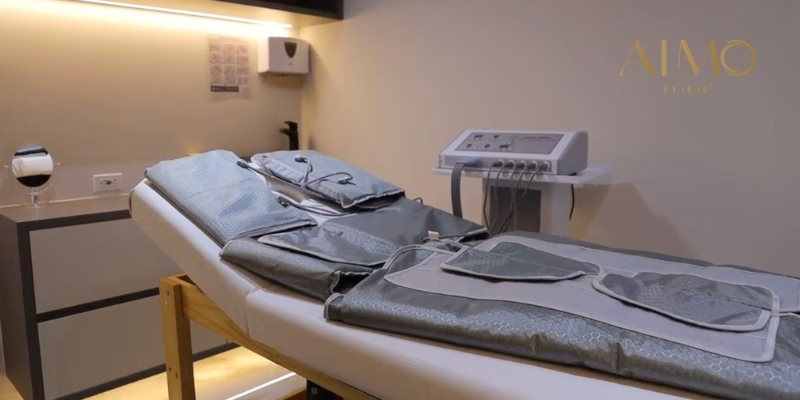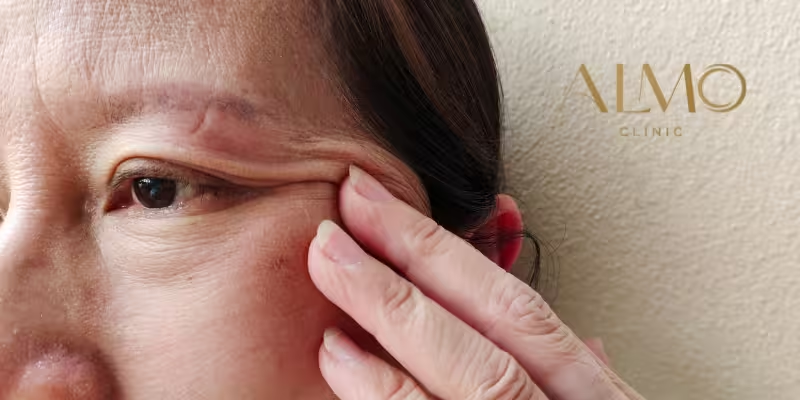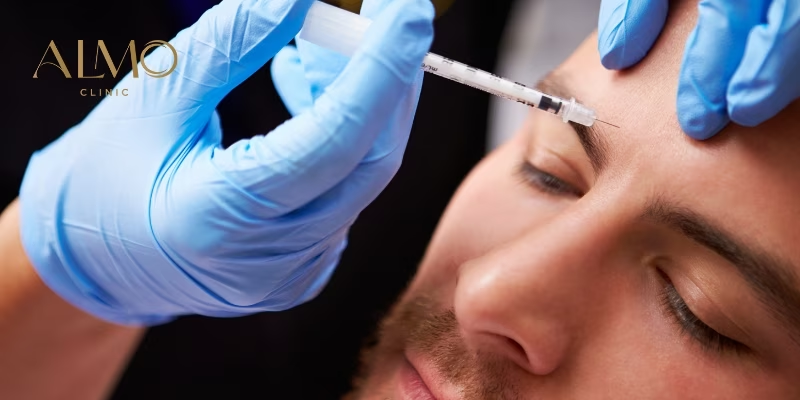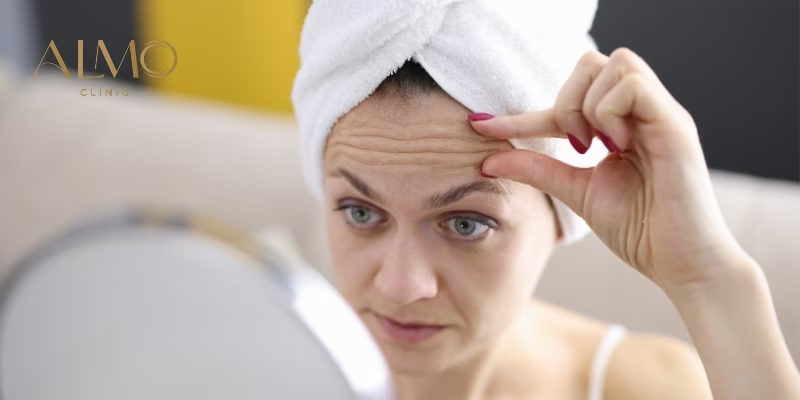“Doctor, I think they destroyed my face.”
Andrea walked into our practice on a Tuesday afternoon with visibly asymmetric facial features. Three weeks earlier, she’d gotten fillers at an “aesthetic clinic” offering prices 60% below market average.
The result: one cheekbone sat noticeably higher than the other, she had palpable lumps in both cheeks, and the skin around the injection sites showed signs of chronic inflammation.
“I saw their Instagram photos and it looked like a serious place. They had thousands of followers,” she explained while pointing to the irregularities on her face.
I see this story monthly.
After spending more than a decade correcting aesthetic medicine complications, I’ve identified that 8 out of 10 serious cases come from facilities that appear to be medical clinics but operate like beauty salons.
Here’s exactly how to distinguish a legitimate clinic from one that could permanently damage your face.
Evaluating aesthetic clinics? Discover why we’re different →
The reality of aesthetic medicine in major US cities
Across major metropolitan areas, hundreds of facilities offer “aesthetic treatments.”
But only a fraction are actually licensed as legitimate medical institutions with specialists specifically trained in aesthetic medicine.
The rest are adapted beauty salons, general practice offices, or commercial spaces that hire doctors by the hour to inject products without specialized oversight.
The difference isn’t just quality—it’s basic safety
During my European fellowship in aesthetic medicine, I learned biosafety standards that many US facilities don’t even know exist.
When I returned and began seeing complications from other places, I understood why aesthetic medicine has a completely different reputation in developed countries with stricter regulation.
Want European-standard treatment? Schedule specialized consultation →
The warning signs that never fail to identify a legitimate clinic
Board-certified specialists with specific training
This is the most critical difference and the easiest to verify.
A legitimate aesthetic medicine specialist has minimum two years of specific postgraduate training after completing general medicine. In the US, this means board certification in Dermatology, Plastic Surgery, or specific aesthetic medicine fellowship training.
When I asked Andrea about the training of the doctor who treated her, she told me: “He said he was an aesthetic medicine specialist, but when I asked where he studied, he was vague.”
Turns out he was a general practitioner who’d taken a weekend course on filler injection.
The specific question you must always ask: “Where did you complete your board certification in aesthetic medicine and how many years did it take?”
If they evade the answer, change the subject, or mention “certifications” from short courses, leave immediately.
Facilities that meet hospital-grade standards
Aesthetic medicine, even when outpatient, requires biosafety standards similar to surgical suites.
This includes autoclave for instrument sterilization, documented disinfection protocols, biological waste disposal systems, and current licensing from state health departments.
Andrea told me the place where she was treated “looked more like a spa than a medical clinic.” She didn’t see sterilization equipment, staff wore beauty salon uniforms, and they never took her medical history.
At our practice, our treatment rooms are certified with HEPA systems and international protocols. Every patient can see our medical certifications in reception.
The difference isn’t cosmetic. It’s the difference between a controlled medical procedure and commercial application without supervision.
Original FDA-approved products with documented traceability
Counterfeit or questionable fillers and toxins are a silent epidemic in aesthetic medicine.
An original Juvéderm vial costs approximately $400 from authorized suppliers. If a clinic offers complete treatment for $300, it’s mathematically impossible they’re using original product.
Andrea’s case was exactly this. She paid $1,200 for “premium fillers” that turned out to be generic product of unknown origin. Correcting the complications later cost her $8,000 and six months of treatment.
At our practice, we show patients the original vial before opening it, with security holograms and verifiable lot numbers. We also document the cold chain from supplier to application.
The three mistakes patients make when choosing
Mistake #1: Deciding based solely on price
The lowest price almost always hides compromises in safety, staff training, product quality, or follow-up protocols.
A properly performed Botox application includes: 45-minute prior medical consultation, original certified product, personalized injection technique according to facial anatomy, 30-day post-treatment follow-up, and immediate availability for any complications.
A cheap commercial application generally includes only: product injection in 15 minutes without prior evaluation.
The cost difference reflects the difference in actual medical service.
Mistake #2: Trusting flashy social media presence
Instagram and TikTok have become the primary marketing tools for unregulated aesthetic centers.
Before/after photos (frequently edited), emotional testimonials, luxurious-looking facilities, and thousands of followers can generate false confidence in places that don’t meet basic medical standards.
Andrea was a victim of exactly this. The facility’s Instagram account had 50,000 followers and posted successful cases daily. What they didn’t show were the complications arriving at my office every month.
Legitimate clinic social media includes: detailed information about specialist training, visible medical certifications, documented cases with patient authorization, and transparency about risks and possible complications.
Mistake #3: Not verifying post-treatment follow-up
Aesthetic medicine doesn’t end when the patient leaves the office. The first 30 days are critical for identifying any irregularities, adverse effects, or need for adjustments.
A legitimate clinic includes structured medical follow-up: 2-week control, immediate phone availability, clear protocol for complication management, and touch-up at no additional cost if necessary.
Commercial centers generally disappear after the procedure. Andrea tried contacting the place where she was treated when complications began, but they told her “irregularities were normal” and would “correct themselves over time.”
Six months later, the irregularities worsened and required specialized medical intervention.
My protocol for evaluating a clinic before treatment
Through years helping patients correct complications, I developed a specific protocol anyone can apply before deciding where to get treated.
First visit: evaluation only
Never get any procedure on the first consultation, regardless of offers or pressure you receive.
A legitimate clinic will always require prior medical evaluation, complete medical history, contraindication analysis, and personalized treatment plan. This process takes minimum 45 minutes if done correctly.
During this consultation, observe: Do they take medical history? Do they explain specific risks? Do they show medical certifications? Do they let you see the product before application? Do they include follow-up in the price?
Credential verification
Request to see directly: board certification diploma, state medical license, membership in scientific societies (ASAPS, AAFPRS), and facility licensing from health departments.
If they refuse to show any of these documents, leave immediately.
Facility evaluation
Observe whether facilities look like medical offices or adapted beauty salons. Is there visible autoclave equipment? Does staff wear appropriate medical uniforms? Is there documented disinfection protocol?
At our practice, patients can tour our facilities during first consultation to verify our biosafety standards.
The specific questions you should always ask
These three questions never fail to identify unregulated centers:
“Where can I verify your specific medical board certification?”
The answer should include specific medical school, years of training duration, and state medical license number. Any vague or evasive response is a red flag.
“Can I see the original product before you open it?”
They should show you the original vial with security holograms, lot number, expiration date, and FDA approval. If they refuse or say it’s “already prepared,” it’s questionable product.
“What exactly does post-treatment follow-up include?”
The answer should specify: included controls, follow-up duration, emergency availability, complication protocol, and touch-up policy.
Why we chose a different approach at our practice
After correcting hundreds of complications from other centers, we decided our main differentiator would be real medical safety, not attractive marketing.
Our specialists have verifiable specific university training. My board certification in Plastic Surgery plus European fellowship in aesthetic medicine establishes standards few practices can match.
Our facilities meet hospital protocols. Certified treatment rooms, HEPA systems, international biosafety protocols, and waste disposal according to medical standards.
We only use original FDA-approved products. Every vial is shown to patients before opening, with complete traceability from authorized supplier to application.
We include real medical follow-up. 30 days of monitoring with immediate availability via secure messaging, included in-person controls, and structured protocol for any irregularity.
What I learned correcting complications
80% of complications I see could have been avoided if patients had chosen facilities with legitimate medical certification from the beginning.
Correction cost is generally 3 to 5 times higher than treatment done right initially. More importantly, some complications can generate permanent sequelae that no subsequent treatment can completely correct.
Andrea finally achieved satisfactory correction, but the process took six months, multiple procedures, and total investment exceeding $10,000. Her face recovered symmetry but retains minor irregularities that didn’t exist before the initial treatment.
“I wish I had researched better from the beginning,” she told me at her final follow-up. “The initial savings wasn’t worth everything I went through afterward.”
Your smartest decision
It’s not about choosing the most expensive clinic. It’s about choosing a clinic with legitimate medical standards that prioritizes your safety over their commercial margins.
In aesthetic medicine, like any medical procedure, the technical competence of the specialist and facility quality completely determine the difference between successful results and complications that can affect your life.
Are you considering aesthetic treatment? I invite you to apply this evaluation protocol to any center you consider, including ours.
An honest medical evaluation will give you complete clarity about what you actually need, what options you have, and the safest way to proceed.
Dr. Oscar Barón - Board-Certified Plastic Surgeon
European Fellowship in Aesthetic Medicine
ALMO Clinic - Legitimate medical aesthetic care since 2014



